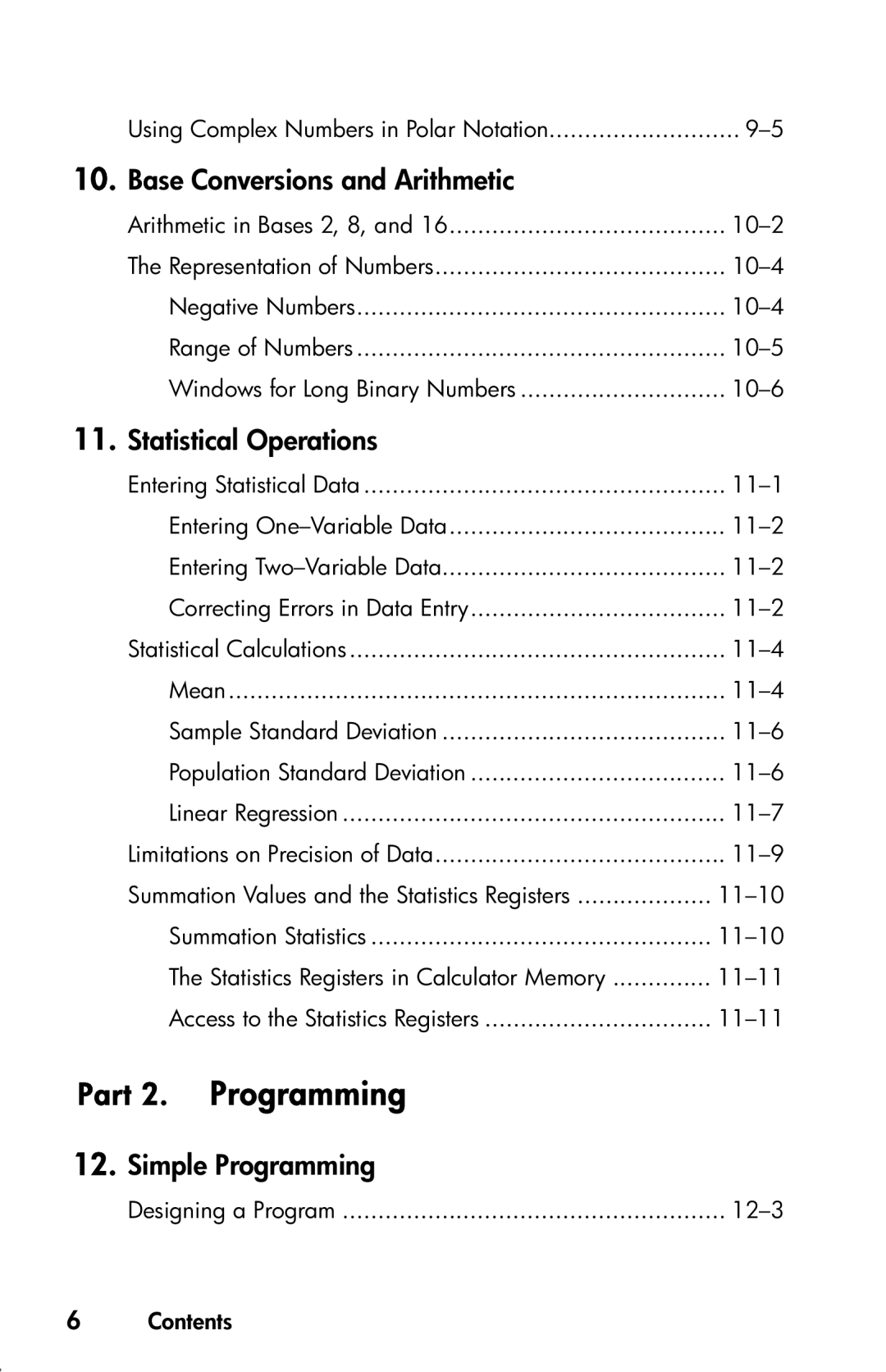Using Complex Numbers in Polar Notation |
10. Base Conversions and Arithmetic
Arithmetic in Bases 2, 8, and 16 | |
The Representation of Numbers | |
Negative Numbers | |
Range of Numbers | |
Windows for Long Binary Numbers |
11. Statistical Operations
Entering Statistical Data | ||
| Entering | |
| Entering | |
| Correcting Errors in Data Entry | |
Statistical Calculations | ||
| Mean | |
| Sample Standard Deviation | |
| Population Standard Deviation | |
| Linear Regression | |
Limitations on Precision of Data | ||
Summation Values and the Statistics Registers | ||
| Summation Statistics | |
| The Statistics Registers in Calculator Memory | |
| Access to the Statistics Registers | |
Part 2. | Programming |
|
12.Simple Programming
Designing a Program |
6Contents
